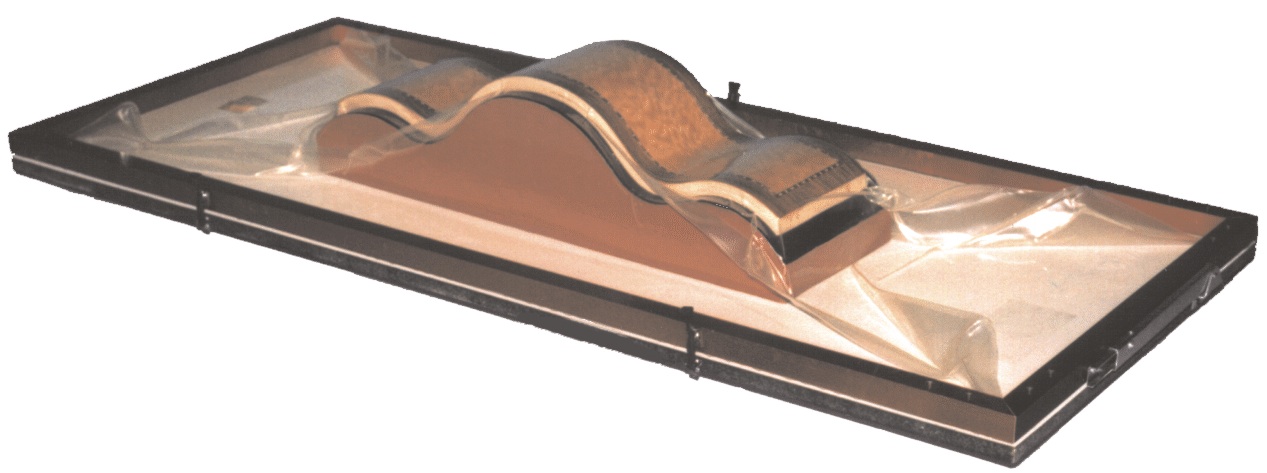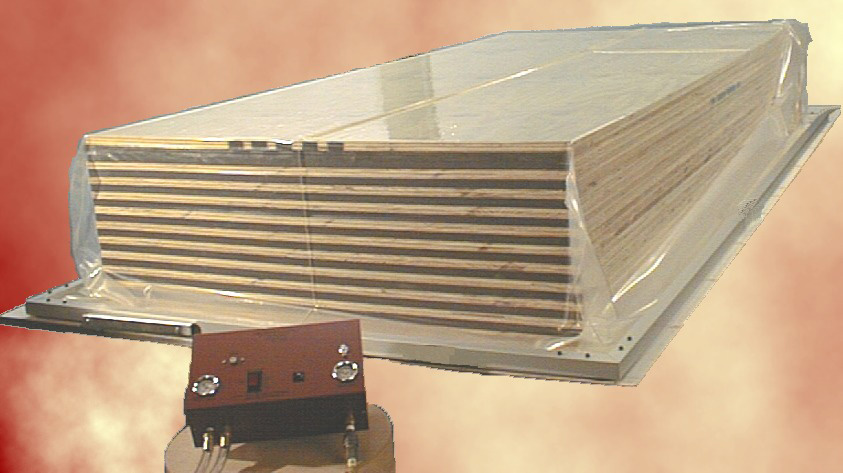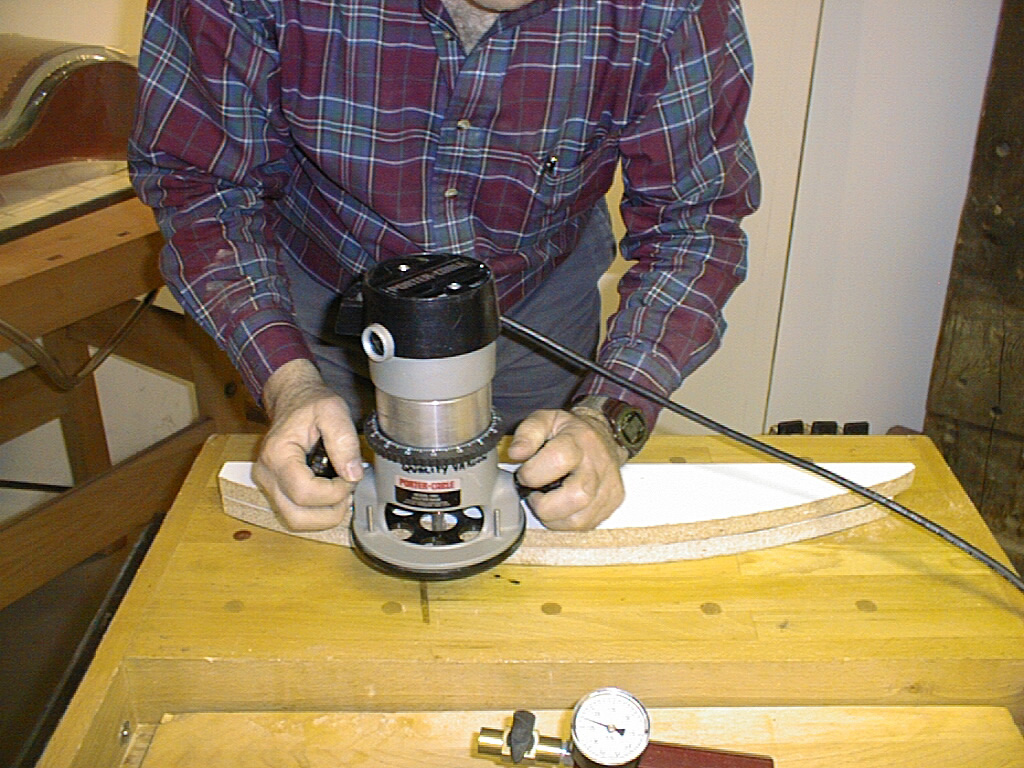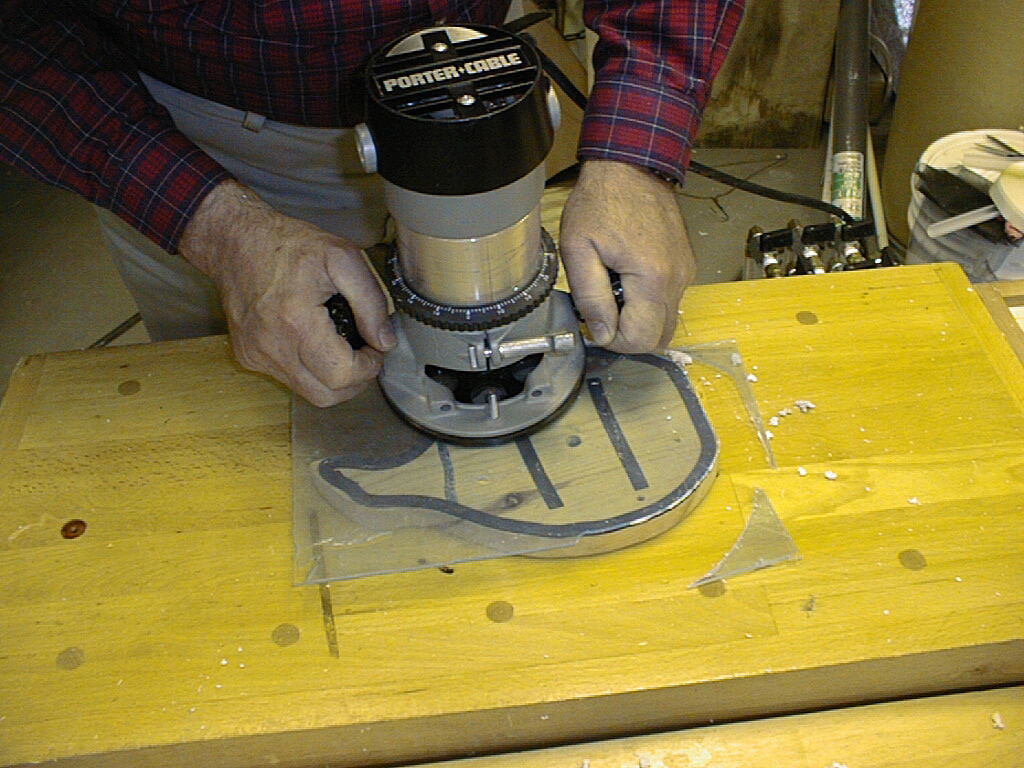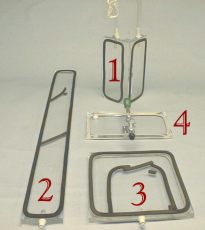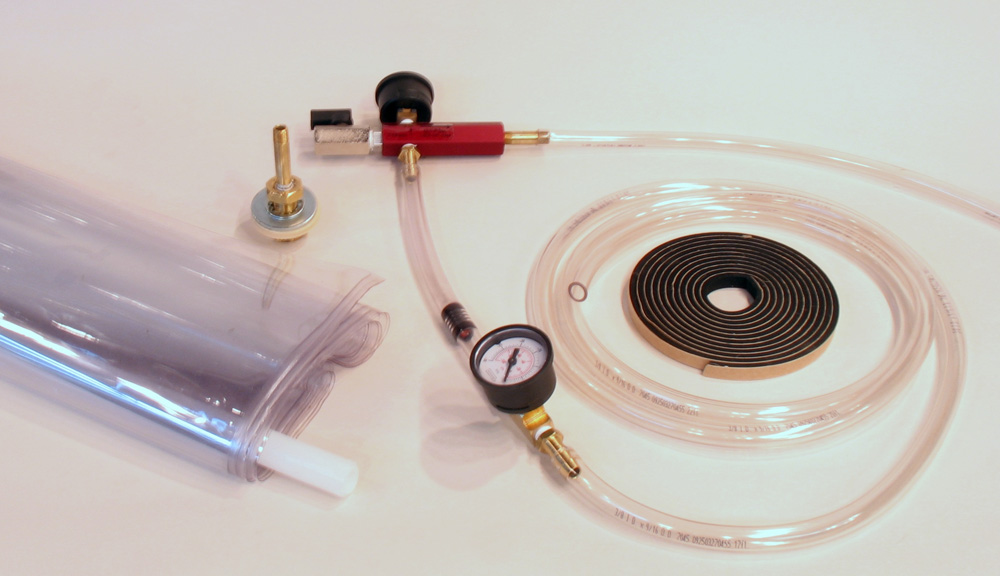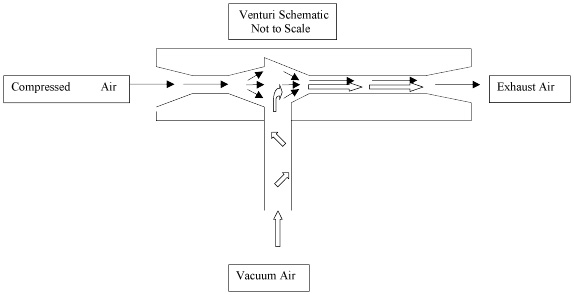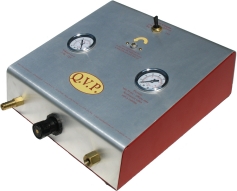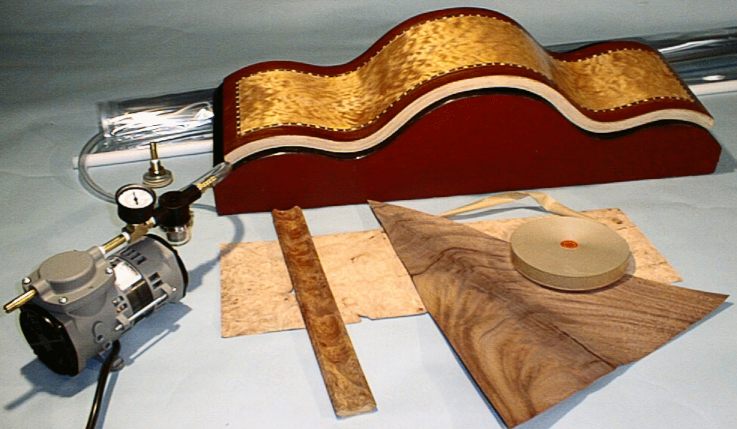
The myriad of clamps we all own work quite nicely for most simple assembly tasks. Two jobs, though, present a consistent challenge: veneering and holding parts for machining. Veneering a large area requires getting uniform pressure over the entire surface, a challenge for flat panels and a near nightmare for contoured ones. When holding parts for machining, no matter how you approach it, the clamps seem to get in the way. Far and away, the best solution for both these troublesome clamping chores is to use vacuum.
As a result, both vacuum bag pressing and vacuum parts holding have been growing in popularity for small shops and hobby woodworkers. For the past two decades, Ed Ferri has been instrumental in driving that trend. His company, Quality VAKuum Products, was formed specifically to serve our needs, and for many of us who rely on vacuum for shop tasks, he’s been a real lifesaver. When I spoke with him about the history of his company, I was astonished to discover that yours truly was an unintentional catalyst for the formation of his company. I’ll let him tell you about it.
“I started Quality VAKuum Products in 1991.” Ed recounted. “At the time, I was working as sales manager for my brother, who owns a company that makes venturis for big industry. You wrote an article on them in a major woodworking magazine around 1987. As a result of that article, we sold hundreds of manual venturis to a whole new market: the woodworking industry.
“I had been an engineer for most of my life before going into sales, but always wanted my own company. I talked to my brother about expanding his business to accommodate woodworkers, but he felt it was too small a niche market. I decided to start my own company, and QVP was born.
“It started in my basement and grew. Today, I employ four people full-time, and often have extra part-time people to replenish inventory. That’s because 99 percent of our products ship the day they are ordered, so at times a single big order can deplete our stock. All our venturi vacuum pumps are manufactured right here in Concord, Massachusetts. We make vacuum bag systems for pressing and clamping, and systems for holding parts.
“One the most common woodworking applications is vacuum bag pressing, used mostly for lamination. You get even and uniform pressure all over, and therefore get a good pressing every time when veneering. Basically, you start with a sealable vinyl or polyurethane bag, put your laminates into the bag, and turn it on. The bag compresses around the parts to apply even and uniform pressure in all directions wherever the bag makes contact. At the same time, the vacuum draws out air from the pores of the wood, giving you deeper penetration of the glue, and removes moisture more quickly to allow waterbased glue to set up faster.
“Template routing is another big application for vacuum holding. Because a vacuum clamp holds parts only from one side and attaches and releases almost instantly, it is far better and faster than clamps, double-sided tape or screws. One customer bought a hundred dollar venturi, turned all his clamps from standard to vacuum, and dropped his working time for a particular operation from three weeks to three and a half days.
“Let’s say you had to cut out 50 circles. With a vacuum clamp, you could hold the part down to a table and go all the way round the circle with a router without stopping or moving clamps. Or you could attach the part via one face only to a template, and move it and the part around a bearing-mounted router bit set into a router table. From a clamping point of view, it’s faster, but more importantly, far safer than using mechanical clamps. I had a school system in Texas who bought one unit. They tested it and promptly bought 15 units, one for each shop in each school, and did it for safety reasons.”
Once again, Ed brought up our mutual history. “Back around 1988, I visited your guitar shop,” he reminded me. “One troublesome operation your people grappled with was holding guitar necks for shaping. The task involved cutting three of the four sides of a billet, and figuring out how to clamp them into a safe fixture was a challenge. You told me that once you switched from manual holding while shaping guitar necks to vacuum holding, you went from 20 percent loss to less than two percent loss.”
He’s right, but that was the least of it. What really inspired the change was a near accident. Back when we were still using a haphazard combination of end clamps and brads for gripping to the fixture, one of my employees was running a neck though the big five horsepower shaper. As often happened, it let go, but this time the neck shot like a missile, ending up impaled through the wall of the break room. We left it in the wall as a permanent safety reminder, but once we switched to vacuum holding, it never happened again.
“The bottom line,” Ed continued, “is that you can hold just about any shape item with vacuum, and use the same vacuum to clamp that in turn to a bench or work surface. Because there is so little space between the vacuum clamp, part and work surface, the clamping takes place instantly. Of course, you can make your own clamps and setups, so we sell individual parts, but we also try to sell complete systems that allow one-stop shopping.”
The heart of the system, whether bag pressing or template holding, is a vacuum pump. QVP sells both electric and air-powered pumps, but Ed admits that the air pumps, which are simple venturi tubes, are far and away the industry favorite.
“A venturi is an air-powered vacuum pump,” Ed explained. “One of the beauties of it is that it has no moving parts, therefore has ultimate reliability. Compressed air runs down the center of it. Inside, the air is allowed to expand in a controlled manner. As the compressed air expands, gaps form between the air molecules. More air flows in at 90 degrees to the airflow and gets entrained into the airflow. In other words, as you run compressed air through the tube, it creates a vacuum at 90 degrees to the air low direction. The beauty of it is that the whole venturi can be as small as a C size battery.
“Venturis are the most significant portion of the business. For every electric pump we sell, we sell four or five venturis. Electric pumps mostly go to those who don’t have the compressed air capacity.
“We have venturis that draw two cubic feet (cfm) per minute at 85 pounds per square inch (psi) and can work off a small pancake compressor, and pumps that draw 20 cfm. They all develop the same vacuum; the only real difference is how fast it gets there. For example, a 5 cfm venturi will evacuate a four-by-eight bag with a flat panel in it in about a minute and a half. A two cfm would take almost four minutes. A 20 cfm will do it in about 20 seconds. The bottom line is that you can do the job with any size venturi pump; the real difference is all about speed.
“If you have a flat panel, speed doesn’t matter, but if you have a complex shape in a large bag, or many laminates, time can be important. In that case, you would want a larger pump. The most common pump we sell is the five cfm unit. A manual venturi with a two- by four-foot bag starts at around $250 dollars, and more complex or larger automatic systems go up from there.
“Another good investment is an automatic controller, which lets the system use as little air as possible by shutting off the compressor once the vacuum is drawn. For example, a glue-up of a four-by-eight flat panel using urea glue might take about four hours to cure. Instead of the compressor running for four hours, an automatic system would have the compressor running only about one minute per hour of glue-up. Of course, you could also keep an eye on the gauge and constantly turn the compressor on and off as needed, but most serious woodworkers won’t waste that time.
“We sell direct from our web site, and there are distributors around the country. However, because the parts are fairly small and are both safe and easy to ship, it makes a lot of sense to buy online. Personally, I like people to call on our 800 number and discuss their application. Then we can hone in very specifically on their needs, make a recommendation and give them a quote right there on the phone. That way they get everything they need and nothing extraneous. We have a huge product line, and we’ll do custom or special orders, including any types of bags, frame presses and special venturi equipment.
“We also allow for future upgrades. If you start with a $250 manual unit, and decide you want to upgrade to an automatic unit, you can send it back and we will put the venturi into a larger unit, so you never lose your investment. In fact, you can upgrade repeatedly and indefinitely without ever losing your original investment. For those who need an introduction to the potential uses, there are dozens of pdf files with explanations of how the equipment works and the various things you can do with it on the instructions page of our web site.
“Both pro and hobby woodworkers will go out and spend a couple hundred dollars on a router,” Ed pointed out, “yet they will often ignore something as simple as a vacuum press. Vacuum can add both beauty and safety to your efforts. It can take your woodworking to a higher level of quality and allow you to attempt things you would never try otherwise. From a woodworker’s point of view, what could be better?”
